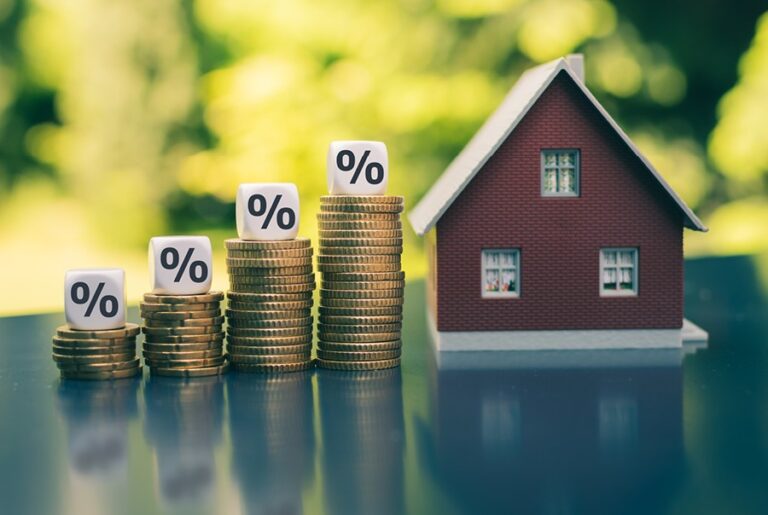What is a tracker mortgage? How does it differ from a fixed rate mortgage? And why might it be your best bet if you’re looking for a mortgage or remortgage right now?
Back when mortgage interest rates were tiny (remember that?) a fixed rate mortgage was a rather wonderful thing. It meant that you could fix your mortgage at a low rate for up to 15 years—although usually two to five—safe in the knowledge that if went up you’d be protected and if it went down you wouldn’t lose out too badly because there wasn’t much further for rates to fall. Most importantly, a fixed rate gave you certainty and when the mortgage is your biggest outgoing every month, certainty is a good thing.
Of course, mortgages are no longer at their rock-bottom lowest. Only a year ago you could have found 5-year fixed rates well below 2% (and some 2-year deals at under 1%). Today, the best you’ll find is around 5.25% (depending on the loan to value).
Historically, that remains low but we’ve all got used to very low rates and the rapid increase has come as a bit of a shock to the system. So is a fixed rate mortgage still the way to go?
Why a fixed rate mortgage may not be your best option right now
In March 2009 you may have felt pretty good about life if you’d locked yourself into a fixed rate mortgage for just under 6%. The world had just suffered a financial meltdown. Some banks and building societies had gone to the wall; others had needed a government rescue to save them. Things looked rather bleak and no one really knew what was going to happen next.
The financial certainty of a fixed rate mortgage looked like a very good bet. But then something strange happened. Mortgage rates fell off a cliff. Most fixed rates fell 2-3% in a year.
If you’d managed to nab a 10-year fixed rate in early 2009, you’d have still been paying that fixed rate through to 2019 and missed an entire decade of the lowest interest rates we’ve ever seen.
We don’t know where mortgage rates will go next, but there’s a risk that fixing now at a high rate could give you financial security (good) at a high cost (not so good). Already, we’ve seen fixed rates just starting to retreat from highs last month. It’s only 0.1-0.2% of a difference, but that’s money that’s better in your pocket than a lender’s.
So what’s the alternative?
What’s the difference between a fixed rate mortgage and a tracker?
Fixing your mortgage, as the name suggests, locks it for the duration of the fix. Fix at 5.5% and whether mortgage rates shoot up to 10% or plummet to 1%, you’ll pay 5.5%. That’s great news if rates go up but you may be kicking yourself if rates go down.
A tracker mortgage takes the base lending rate set by the Bank of England as its starting point. At time of writing, that’s 3%. It will add an amount to that rate and then track the base rate is it rises and falls.
For example, you choose a tracker mortgage of 4% (3% set by the BoE plus an extra 1%). Over the next few months, the Bank of England continues to raise interest rates. They peak at 0.5% higher than today, so your tracker mortgage follows suit – it peaks at 4.5%.
Then rates start to fall, and your tracker mortgage falls too.
Benefits and disadvantages of a tracker mortgage
Why choose a tracker over a fixed rate mortgage? The big advantage is that your mortgage will go down if interest rates do. Also, because the tracker is linked to the base rate, your mortgage will change based on what the Bank of England does, not what your lender decides.
The downside is that your mortgage isn’t fixed. If interest rates go up, your mortgage will too, although a tracker is typically cheaper than a fixed rate mortgage and cheaper than simply staying on the standard variable rate.
How much cheaper is a tracker mortgage compared to a fixed rate?
Here’s a comparison:
You want to remortgage a property valued at £150,000. You still owe £100,000 on it and you want a remortgage for the amount you owe over 25 years. On rates at time of writing, and purely as an example, you could expect to get a 2-year tracker rate at 3.19% which would leave your mortgage at £483.75 per month. The most competitive 2-year fixed rate remortgage would be in the region of 5.35% and cost you £605.16 per month.
That’s £121.41 more per month.
Is a tracker mortgage right for you?
It might be, but to be sure we need to talk. If you’re looking for a new mortgage or remortgage, talk to us now.
Remember: Your home may be repossessed if you do not keep up repayments on your mortgage.




